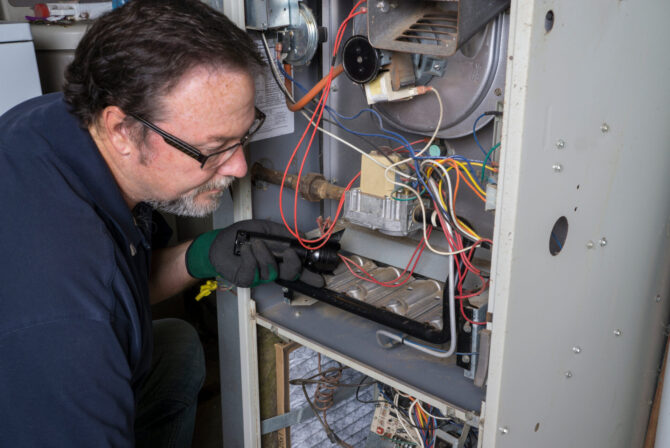
Furnaces are essential to keeping your home at a comfortable temperature during the cold months. But many people don’t know how they function, and this makes it difficult to know when a problem has occurred.
At Champion Home Services, we’ve put together this helpful guide to furnaces to help you better understand how they operate. When you’re aware of all its moving parts, identifying a problem will become easier. And when it’s time for a San Antonio heater installation, call the skilled technicians at Champion Home Services!
Understanding the Main Components
To better understand the basic heating cycle, it’s helpful to first know what components make it possible. Some of the main parts of a furnace include:
Burners
The burners are a set of tubes where gas is directed and then burned, similar to a grill. The flames are controlled through the gas valve, igniter, and flame sensor.
The gas valve is opened when the system indicates the need for heat, and the mixture is then ignited. The flame sensor is an added safeguard that turns off the incoming gas if no flames are present.
Thermostat
This temperature-activated switch is responsible for beginning the heating process by turning on the ignition switch. It’s also responsible for controlling the temperature the furnace maintains.
Draft Hood
Combustion is produced when air is drawn into the burners and mixed with the gas. A draft hood or fan is responsible for making combustion more efficient. It also guides heat from the burners into the heat exchanger to vent the excess gases from the home.
Blower
The blower is a fan that directs air from the return ducts into the heat exchanger. This air is then sent through the vents to heat the home. Updated models have blower fans capable of adjusting their own blade speed.
Heat Exchanger
This is a series of metal tubes that are heated by the burners to warm the air inside the system. When gas combusts into the heat exchanger, the metal becomes hot and transfers its heat into the air.
Flue
This component is responsible for carrying excess gases outside of the home. Different models will use different materials, each with its own rates of efficiency.
The Basic Heating Cycle
So, what actually occurs inside your furnace when you crank on the heat?
First, natural gas will be ignited into the burner, creating flames that heat up the exchanger. This heat exchanger then transfers its generated heat into the air, which is then blown into your home’s ductwork by the blower. Any excess gas is eliminated through the flue.
Cooler air from your home is then sucked into the furnace, beginning the cycle anew to keep your home at a comfortable temperature.
Installation and Replacement
Furnaces are complex systems, and sometimes it’s difficult to pinpoint a problem with so many moving parts. Fortunately, the skilled team at Champion Home Services can easily identify and resolve any issue that may interrupt your furnace’s heating process.
Installations are a bit trickier than furnace replacements, but it’s no trouble for Champion Home Services’s experienced technicians. This may be more costly if done in the winter, so it’s best to have regular maintenance done on your furnace to ensure all the components are working as they should.
Contact Champion Home Services for a Furnace Installation
Your furnace works hard to keep your home warm, but when something goes wrong, you should call Champion Home Services. With years of experience, our technicians know how to safely and effectively identify and fix any problem your furnace may have. Contact us today if you suspect your furnace isn’t producing efficient heating!




